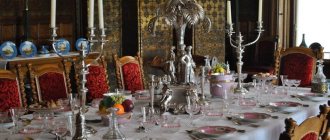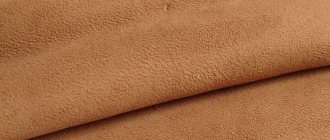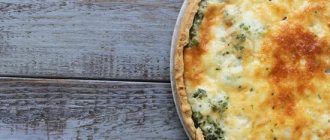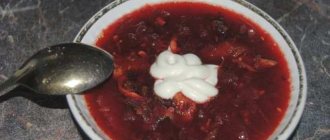Composition and properties
Bleach is a white, powdery substance. It is sold in bags or packages weighing from one kilogram to thirty. It contains active chlorine, which, when combined with water, dissolves to form lime. This substance is quite persistent and does not lose its properties throughout the year.
You may be interested in:What is solar time?
In addition, chloramine, which is made from toluene and benzene, is also used for disinfection. This gray-yellow powder contains 26.6% chlorine.
Chloride of lime: preparation of disinfectant solutions, application
Dry bleach (“bleach”) is a disinfectant that has proven its effectiveness over decades of use and has no more effective analogues. It consists of calcium hydroxide (slaked lime), hypochlorites, chlorides, chlorates and calcium carbonates, containing 20-25% of the active substance. Available in the form of a white or lightly colored powdery mass.
The popularity of this material is largely due to the fact that only chlorine is capable of destroying some viruses and bacteria: the causative agents of HIV infection, hepatitis, tuberculosis and other dangerous diseases.
Chloride of lime for disinfection is used both in dry and diluted with water form. It should be borne in mind that chlorine is active only in a humid environment, so bleach (powder) must be used on pre-moistened surfaces. For maximum effect, a mixture called “master batch” is prepared, as well as its varieties.
Preliminary preparation
As a rule, bleach is used by healthcare workers to disinfect premises. Before preparing a stock solution of bleach, according to safety precautions, a person must have gloves on their hands, and a respirator and goggles on their face. Moreover, latex gloves are absolutely not suitable. The best material would be dense rubber. The worker also wears a protective apron. After finishing work, he removes all protective equipment and washes his hands thoroughly.
Cooking procedure
Usually they act as follows. Before preparing the mother solution, prepare a special enamel container in which the powder will be diluted. To work, you will need a wooden spatula to stir the solution. For one kilogram of dry powder, take ten liters of clean water, which is poured into a container. Next, carefully pour out the powder and stir with a stick or spatula. After the powder has completely dissolved, the solution is left to infuse for 24 hours. As a rule, it is stirred at least two or three more times immediately after cooking.
After the required period has expired, the prepared solution is poured into a pre-prepared glass jar for further storage. A sheet with the date of preparation of the solution, the signature of the responsible medical worker who prepared the bleach, as well as the percentage of the components must be glued to the container. It should be borne in mind that the prepared composition is stored for no more than ten days.
You may be interested in: Future Simple. Example sentences (affirmations, negatives, questions)
The chloramine solution is prepared in just one step. For one liter of liquid you will need no more than fifty grams of powder. Stir it with a wooden spoon until completely dissolved. Next, the container is covered with a lid and labeled. Use the composition immediately after preparation.
Solutions of bleach at 5, 3, and 1% should be prepared immediately before use. To do this, simply add some water to the mother liquor. Even in the absence of a table, it is very easy to calculate the ratio of components. For example, to prepare three liters of a one percent composition you will need only three hundred milliliters of solution and 2700 g of water.
Safety Notes
A weak solution of bleach does not kill pathogens, and the correct concentration is dangerous for humans and pets. Children and animals suffer the most.
- burn your lungs;
- provoke bronchospasm, laryngospasm (fraught with death from suffocation);
- cause poisoning of the body;
- dry/inflame the mucous membrane of the nose and larynx;
- corrode skin, mucous membranes;
- provoke nosebleeds;
- cause eye irritation.
Products containing bleach cannot be disinfected frequently. Their excessive use increases the concentration of chlorine ions in the air. After treatment, the substance remains on surfaces and slowly evaporates.
Toxicity of chlorine-containing drugs
In nature, bleach forms dioxins. The substance is harmful to plants. In living organisms upon contact it causes tissue necrosis, burns of mucous membranes and respiratory organs, and poisoning.
Active chlorine releases toxic substances and/or vapors when mixed:
- with acids, including vinegar;
- sewer cleaning products (cannot be used together or in parallel);
- ammonia (ammonia).
Storage and shelf life of chlorine solution
Bleach (liquid concentrate, gel, powder, disinfectant) is kept in a dark place inaccessible to children and pets. Do not place near heating equipment or food.
Bleach is stored for a year or until the expiration date indicated on the packaging of the product. The container of the solution and bulk disinfectants must be tightly closed without damage.
Poisoning
Bleach poisoning of any degree can be treated under medical supervision. If assistance is not provided, a person can die within half an hour to 7 days.
Sequence of actions in case of poisoning:
- Cover your mouth and nose with a cloth (put on a mask), take the victim outside or open the windows and door for ventilation.
- They call an ambulance.
- Remove the source of chlorine (if the victim remained in the room).
- Provide first aid.
Chlorine is neutralized with a solution of baking soda in a proportion of 1 tsp. for 250 ml of water.
The person's clothes are unbuttoned (for women, the bra is also unfastened). If you faint, apply cotton wool with ammonia to your nose. If breathing stops, perform artificial mouth-to-mouth ventilation.
It is also advisable in case of bleach poisoning to:
- inhale with baking soda;
- rinse your nose, mouth, eyes generously;
- drink water, mineral water or milk.
If chlorine gets into the stomach, give up to 1 liter of water to drink and induce vomiting. Next, drink alkaline mineral water, milk or drinking water.
If chlorine gets on the skin, wash it with water or an alkaline solution. If there are symptoms of a burn, treat with Panthenol or apply grated potatoes. Deep injuries are treated with medications prescribed by a doctor.
Purpose of the compositions
Bleach can be used in dry form to treat urine stains, stool stains, as well as sputum and vomit. The stains are simply sprinkled on top with dry powder in a ratio of about one hundred grams per half a kilogram of discharge and left in this form for fifty minutes.
A stock solution of 0.5, 1 and 2% bleach is used to disinfect objects and premises, and a more concentrated solution will be needed to treat the toilet and trash can.
Application area
The reagent is used in the form of powder, clarified and concentrated solutions in the following areas:
- disinfection of dishes, surfaces, clothing, bed linen, medical instruments, household items (they are soaked or sprayed with a reagent solution);
- to destroy sources of infectious diseases (hepatitis, smallpox, tuberculosis bacillus);
- for quick disinfection of objects;
- for processing food debris and patient secretions;
- certain sections of roads, soil;
- disinfection of hard furniture.
Component ratio
In order to prepare a 5% chlorine solution, you will need five liters of clean water and a 10% clarified mother solution. For a 3% composition, seven liters of liquid are required, for 2% - 8 liters, and in order to prepare a 1% solution - at least nine liters of water. Accordingly, if concentration is required in a 0.1% solution - 9.9 liters of water, for 0.2% - 9.8, and for 0.5% - 9.5 liters of liquid.
These working compositions are obtained from a mother liquor of bleach. If chloramine is used as the starting material, then the concentration of substances will be as follows: for a 4% solution you will need half a kilogram of powder per ten liters of water, for 3% - three hundred grams and 2% - two hundred. Accordingly, to prepare a mother solution at a concentration of 0.2% you will need 20 g of powder, 0.5% - 50 g and 1% - one hundred grams.
Next, in order to make the solution necessary for processing from this composition, you will need a separate container and clean water. To prepare 4% chloramine you will need fifty grams of the composition per 950 ml of water, and for 1% - ten grams. Accordingly, 0.2% is two grams.
Preparation of stock and working solutions of bleach.
⇐ PreviousPage 3 of 22Next ⇒
PREPARATION OF 10% clarified bleach stock solution.
We take 1 kg. dry bleach and dilute in an enamel bucket in a small amount of water (cold) until a slurry forms. Then add the rest of the water to a total volume of 10 liters. Mix all the contents and leave for 24 hours. During the first 4 hours of settling the mixture, it is stirred 3 - 4 times. After 24 hours, remove the resulting film and, without stirring up the sediment, carefully pour it into another dark container. The solution should be stored in a cool, dark place for 5 - 7 days. From the prepared stock solution of bleach, working solutions of the required concentration are prepared as necessary.
0.1% - 100 ml. 10% clarified bleach stock solution per 9.9 liters. water.
0.2% - 200 ml. 10% clarified bleach stock solution per 9.8 liters. water.
0.5% - 500 ml. 10% clarified bleach stock solution per 9.5 liters. water.
1% - 1000 ml. 10% clarified bleach stock solution per 9 liters. water.
2% - 2000 ml. 10% clarified bleach stock solution per 8 liters. water.
3% - 3000 ml. 10% clarified bleach stock solution per 7 liters. water.
5% - 5000 ml. 10% clarified bleach stock solution per 5 liters. water.
1. Bleach is a white crystalline powder with a pungent odor of chlorine, containing 26-35% active chlorine. Chloride of lime easily decomposes under the influence of light, heat, and moisture, so it is stored in a dark, dry room in a closed container. But even with proper storage, bleach loses up to 3% of active chlorine per month. Chlorine containing less than 15% active chlorine is not used. The industry produces a more resistant bleach called bleaching lime, heat-resistant, which loses 1% of active chlorine per year when properly stored.
Ways to Use Bleach
1. in the form of a dry powder. Dry powder is used to disinfect feces, vomit, sputum, blood - pour in a ratio of 1:5 (200 g of bleach per 1 kg of excretion) for 1 hour, urine is disinfected with 1 g/l for 60 minutes. Dry bleach only works on a damp surface.
2. in the form of concentrated 10-20% solutions (they are also called “chlorine-lime milk”), which are used for rough disinfection of waste, garbage cans, and wooden toilets. Chlorine-lime “milk” is prepared from water and dry bleach in a certain ratio and is used immediately.
3. in the form of clarified solutions, which are prepared from chlorine-lime “milk”: the chlorine-lime “milk” is left to settle for 24 hours, then the liquid above the sediment is carefully poured into another container. This supernatant is called the clarified or basic solution. Working solutions of various concentrations are prepared from it, which are used for direct disinfection (vessels, rags, floors, etc.)
Disadvantages of bleach.
· Difficulties during storage due to the high instability of bleach
· Poor solubility in water, so working solutions are prepared in 3 stages
· Destructive effect on fabrics and metal
Preparation of bleach solutions
Bleach solutions are prepared in 3 stages:
Stage 1: preparing bleach-lime “milk” (mother liquor) from dry bleach and water, which is left in the container for 24 hours to allow the active chlorine to transfer from powder to water:
water + dry bleach = mother liquor
Stage 2: preparation of a clarified (basic) solution - after 24 hours, carefully pour into another container the liquid that was formed as a result of settling of the chlorine-lime milk.
Concentrated 10% clarified bleach solution
Stage 3: preparation of the working solution . Water + clarified solution = working solution
Preparation of chlorine-lime “milk” (mother liquor, initial solution). Prepare an enamel bucket, a wooden spatula, 1 kg of dry bleach, 9 liters of water (preparation must be carried out in compliance with safety requirements for personnel, clothing, and premises): carefully pour 1 kg of dry bleach into the bucket, add a small amount of water at room temperature and stir using a wooden spatula until the mixture is uniform and free of lumps. Gradually, with continuous stirring, add the rest of the water. Close the lid, indicate the date and hour of preparation on the label and put your signature (this solution can be used immediately after preparation only for rough disinfection). If a clarified solution is prepared from this solution, then during the first 4 hours it is necessary to stir the mixture several times to better dissolve the chlorine. After this, the solution is left covered for 24 hours.
Preparation of a clarified (basic) solution: Chlorine-lime “milk” gives a precipitate when allowed to stand for 24 hours. After 24 hours, the liquid above the sediment is carefully poured, without shaking, into another container with a lid. The sediment is drained into the sewer. The container with the clarified solution must be marked; the date, hour of preparation and the signature of the person in charge are indicated on the tag. The clarified solution is stored for 5-7 days. Working solutions are prepared from it with a concentration of 0.5% to 10%, depending on the upcoming disinfection.
Preparation of working solutions of bleach (preparation is carried out in compliance with safety requirements for personnel, clothing, premises). Immediately before disinfection, mix room temperature water and a clarified bleach solution in a certain ratio in a container. To do this, you need to calculate the amount of water and clarified bleach solution according to the following scheme:
1. amount of clarified bleach solution in ml: % concentration multiplied by the total amount of solution multiplied by 100
2. amount of water in ml: total amount of solution minus amount of bleach
For example, you need to prepare 3 liters of a 1% bleach solution. We find the amount of clarified bleach solution in ml: % concentration multiplied by the total amount of solution multiplied by 100 = 1% multiplied by the total amount of 3 liters and multiplied by 100 = 300 ml of clarified bleach solution. Amount of water in ml: total amount of solution minus amount of bleach = 3 liters or 3000 ml minus 300 ml of clarified solution = 2700 ml of water. Answer: to prepare 3 liters of a 1% bleach solution, you need to take 300 ml of a clarified bleach solution and 2700 ml of water. A measured amount of water and clarified solution are mixed in a container and disinfected. The solution is used once.
33. Preparation of 1%, 3%, 5% chloramine solutions.
Chloramine is a white or slightly yellowish powder with a faint odor of chlorine. Contains 25-29% active chlorine. More stable in storage than bleach; loses 0.1 - 0.2% of active chlorine per year. Storage conditions: in a dark, dry place, in a closed container.
Ways to use chloramine:
1.in the form of a dry powder. Dry powder is used to disinfect feces, vomit, sputum, blood - pour in a ratio of 1:5 (200 g of chloramine per 1 kg of excretion) for 1 hour, urine is disinfected with 1 g/l for 60 minutes.
2. in the form of solutions that are prepared immediately before use from dry chloramine and water. The concentration of the solution is from 1 to 5%, depending on the upcoming disinfection. The solution is used once.
3.activated chloramine solutions - ammonium salts (1:1) or ammonia (1:8) are used for activation
Advantages of chloramine
· Good solubility in water and ease of use - working solutions are prepared immediately before use
· Stores better than bleach
· does not destroy fabrics, paints, metals
Preparation of chloramine solutions
The chloramine solution is prepared in stage 1: water + dry chloramine = working solution
Preparation of chloramine solution: (preparation is carried out in compliance with safety requirements for personnel, clothing, premises): immediately before disinfection, mix hot water and dry chloramine in a container in a certain ratio. To do this, you need to calculate the amount of hot water and dry chloramine according to the following scheme:
1. amount of dry chloramine in grams: % concentration multiplied by the total amount of solution multiplied by 10
2. amount of water in ml: total amount of solution minus amount of chloramine
For example, you need to prepare 3 liters of 1% chloramine solution. We find the amount of dry chloramine in grams: % concentration multiplied by the total amount of solution multiplied by 10 = 1% multiplied by the total amount of 3 liters and multiplied by 10 = 30 grams of chloramine. Amount of water in ml: total amount of solution minus amount of chloramine = 3 l or 3000 ml minus 30 g. chloramine = 2970 ml of water. Answer: to prepare 3 liters of 1% chloramine solution you need to take 30 grams. chloramine and 2970 ml of water. After the calculation, pour a little hot water into the container, carefully pour dry chloramine into the water and stir with a wooden spatula until there is a uniform paste without lumps, stirring constantly, add the rest of the water. Close the lid, indicate the date and hour of preparation on the tag and put your signature.
The solution is used once.
⇐ Previous3Next ⇒
Recommended pages:
Use the site search:
What is it used for?
The finished stock solution will be used depending on its concentration. For example, a 0.5% working composition made from 0.5 liters of clarified master bleach is used for disinfection in somatic departments. A 1% composition disinfects against pathogens of intestinal diseases. In order to treat hepatitis, you will need a 3% solution, and for tuberculosis - 5%.











